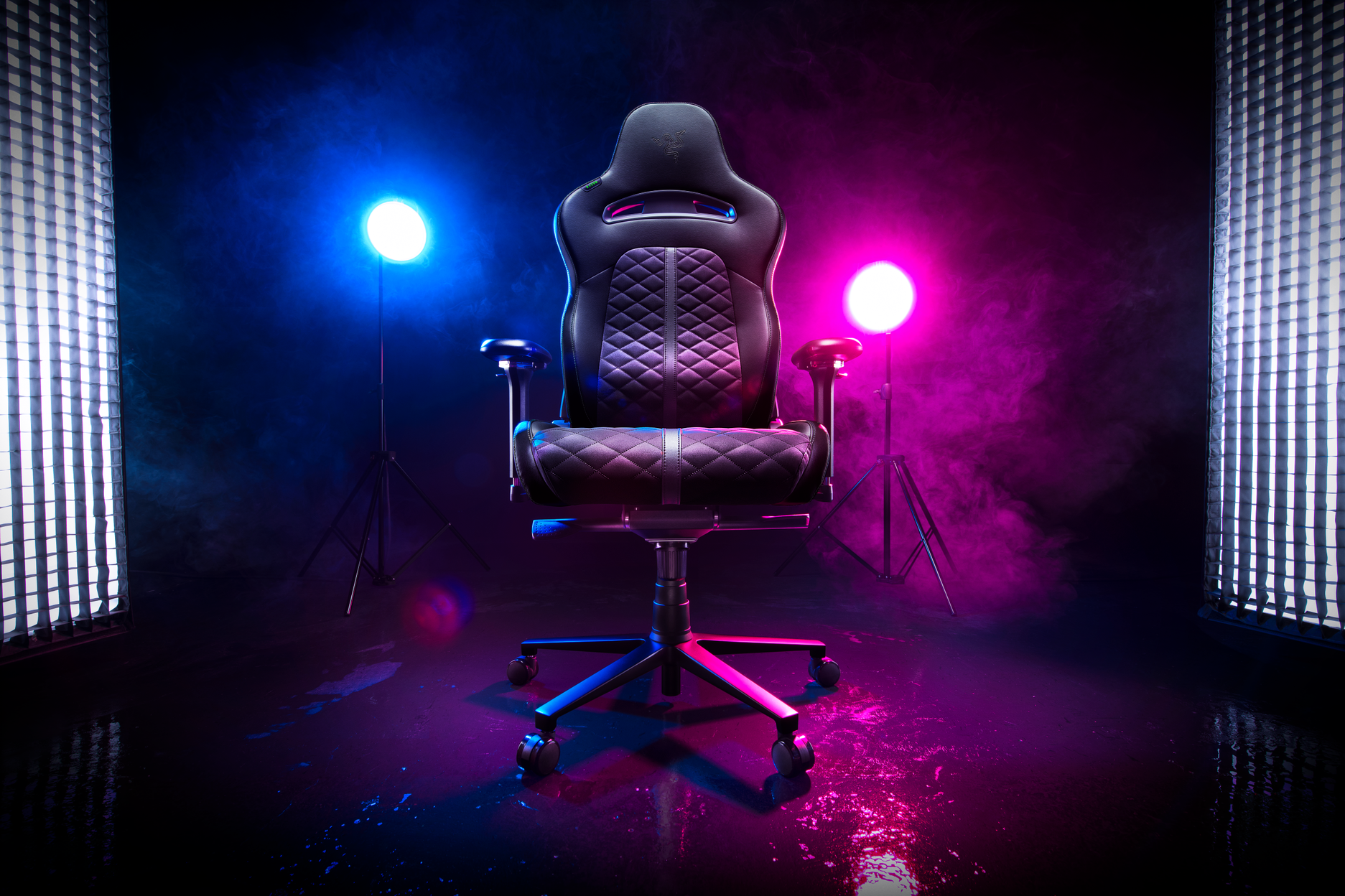Razer’s Next Gaming Chair Ditches the Iskur’s Unique Lumbar Pillow
Last year, Razer made its gaming chair debut with the Razer Iskur, which had a unique hanging pillow for lumbar support that we loved when we reviewed it but that wasn’t ideal for certain body types and helped contribute to a hefty $499 price point. Now, Razer’s following up with the Razer Enki and Razer Enki X, two more traditional gaming chairs akin to what you’ll find on our best gaming chairs list that the company’s hoping will appeal to those that the Iskur’s unique pillow and high price tag scared away.
The Enki’s main selling point is its curved 110 degree shoulder rest and its wide 21-inch seat, which Razer claims work together to cradle the spine and greatly reduce pressure on your, er, lower body. That wide seat is also purpose built to support multiple sitting styles, like sitting cross-legged.
Razer demonstrated the Enki’s pressure reduction capabilities to us with a chart showing how evenly the Enki distributed weight on a number of different users when compared to certain other gaming chairs (A Secretlab Titan Evo chair similar to the Secretlab Titan Evo 2022 and an unnamed DXRacer chair). We’re not cleared to share this chart with you, but it essentially consisted of a bunch of pressure maps of people sitting in the Enki and these two competitors. The Enki looked to generally provide more evenly distributed pressure, specifically for a younger male test subject and older female test subject.
We can’t speak to Razer’s methodology here, but it’s a lofty goal that aims to increase comfort across long gaming sessions.
The other selling point here is largely in comparison to the Iskur, in that the Enki’s lumbar arch is built-in, making it Razer’s first gaming chair with a traditional form factor. While we see the Iskur’s unique form factor as a net positive for the chair, it’s clear from this decision that it didn’t appeal to everyone.
Both the Enki and the Enki X share these features, plus dual-textured synthetic leather which is soft across the seat base and back rest for enhanced comfort and hard around the edges for greater durability. Both Enkis also have a 75 foam hardness back rest cushion and 60 foam hardness seat cushion.
Both chairs can also recline up to 152 degrees, but the way they do so is different. The standard Enki has a reactive seat tilt mechanism that lets you adjust your chair’s recline simply by leaning back, whereas the Enki X needs you to adjust its recline manually. The standard Enki also comes with a tilt tension adjuster so you can change the amount of force you need to apply to adjust the recline when leaning back.
Get Tom's Hardware's best news and in-depth reviews, straight to your inbox.
In addition, the standard Enki also comes with a memory foam head cushion and the same “4D armrests” found on the Iskur. These armrests can move up and down, side to side and back and forth, plus they can swivel as well. The Enki X comes without a foam pillow and only has “2D armrests.” Razer didn’t make it clear to us ahead of time just how adjustable the “2D armrests” would be— i.e. whether they are static or can at least move up and down.
Both the Razer Enki and the Razer Enki X are currently available at Razer.com and at select retailers. Their cost is another benefit over the Iskur: the Enki costs $399 while the Enki X costs $299.
Michelle Ehrhardt is an editor at Tom's Hardware. She's been following tech since her family got a Gateway running Windows 95, and is now on her third custom-built system. Her work has been published in publications like Paste, The Atlantic, and Kill Screen, just to name a few. She also holds a master's degree in game design from NYU.



